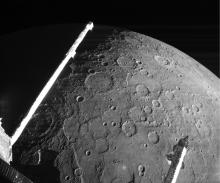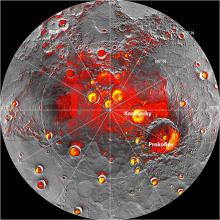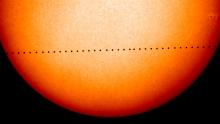Listen to today's episode of StarDate on the web the same day it airs in high-quality streaming audio without any extra ads or announcements. Choose a $8 one-month pass, or listen every day for a year for just $30.
You are here
Venus and Mercury
Some things just make sense. Venus and Mercury are the closest planets to the Sun. They’re also the hottest planets in the solar system. That makes sense. But Venus, the second planet from the Sun, is much hotter than Mercury, the closest planet. And that doesn’t seem to make sense -- at least at first.
Mercury is the smallest of the Sun’s major planets, and its gravity is weak. So if Mercury ever had an atmosphere, it was blown away by the Sun. Without an atmosphere to spread some of the Sun’s heat, there’s a huge range in temperature. On the dayside, it can peak at 800 degrees Fahrenheit. And on the nightside, it can plummet to hundreds of degrees below zero.
Venus is bigger and heavier, so its gravity is stronger. That allowed it to retain its atmosphere, which trapped more and more heat. That evaporated the oceans and boiled gases out of the rocks. The atmosphere got thicker, so it held on to even more heat. Today, temperatures on Venus average about 860 degrees, day and night, around the entire planet. So it just makes sense that Venus is hotter than its closer sibling.
Look for Venus and Mercury close together in the western sky the next few evenings. Venus is the “evening star.” Tonight, fainter Mercury is to its right, by about the width of your fist held at arm’s length. Over the coming days, Venus will drop toward the Sun while Mercury pulls away from it -- hot planets headed in opposite directions.
Script by Damond Benningfield





